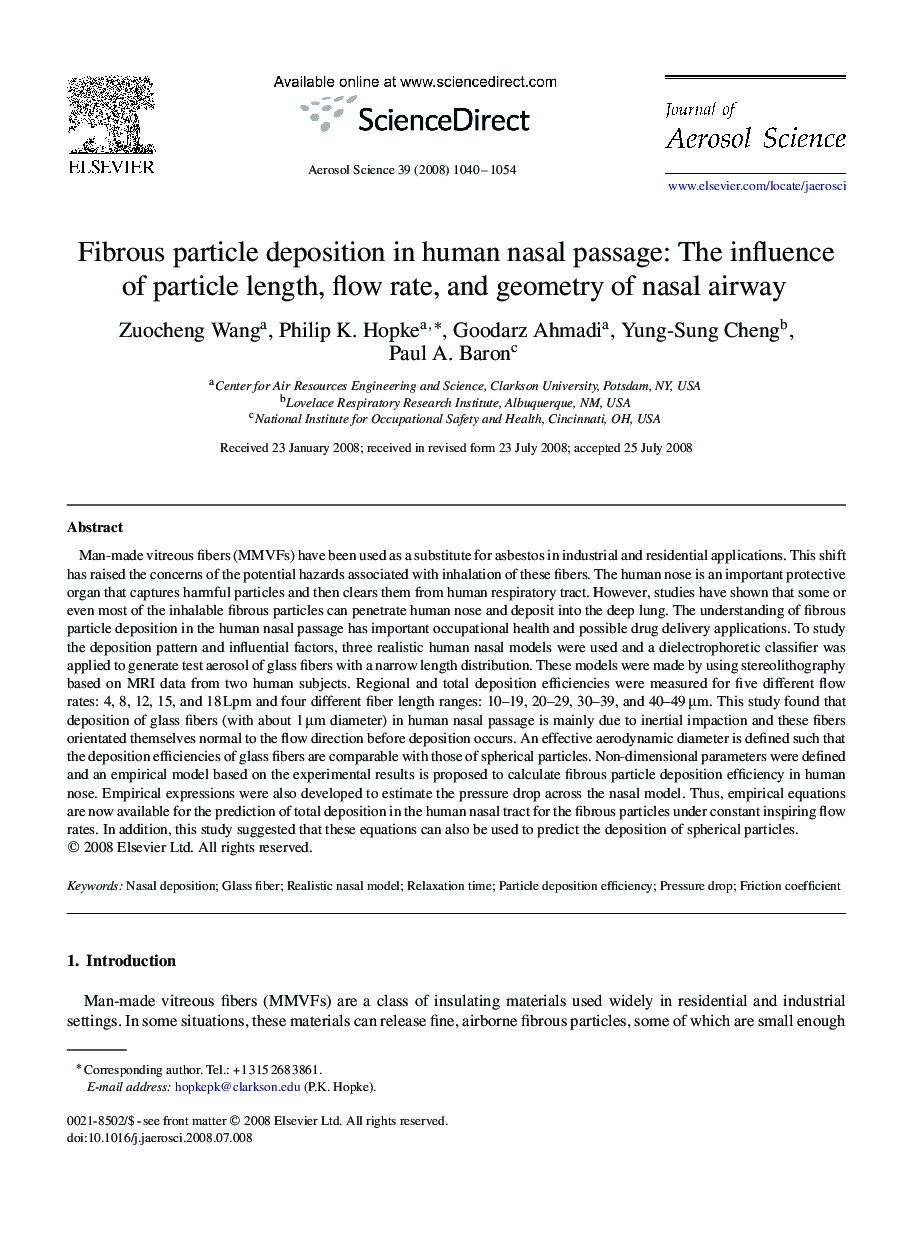| کد مقاله | کد نشریه | سال انتشار | مقاله انگلیسی | نسخه تمام متن |
|---|---|---|---|---|
| 4453001 | 1312123 | 2008 | 15 صفحه PDF | دانلود رایگان |

Man-made vitreous fibers (MMVFs) have been used as a substitute for asbestos in industrial and residential applications. This shift has raised the concerns of the potential hazards associated with inhalation of these fibers. The human nose is an important protective organ that captures harmful particles and then clears them from human respiratory tract. However, studies have shown that some or even most of the inhalable fibrous particles can penetrate human nose and deposit into the deep lung. The understanding of fibrous particle deposition in the human nasal passage has important occupational health and possible drug delivery applications. To study the deposition pattern and influential factors, three realistic human nasal models were used and a dielectrophoretic classifier was applied to generate test aerosol of glass fibers with a narrow length distribution. These models were made by using stereolithography based on MRI data from two human subjects. Regional and total deposition efficiencies were measured for five different flow rates: 4, 8, 12, 15, and 18 Lpm and four different fiber length ranges: 10–19, 20–29, 30–39, and 40–49μm. This study found that deposition of glass fibers (with about 1μm diameter) in human nasal passage is mainly due to inertial impaction and these fibers orientated themselves normal to the flow direction before deposition occurs. An effective aerodynamic diameter is defined such that the deposition efficiencies of glass fibers are comparable with those of spherical particles. Non-dimensional parameters were defined and an empirical model based on the experimental results is proposed to calculate fibrous particle deposition efficiency in human nose. Empirical expressions were also developed to estimate the pressure drop across the nasal model. Thus, empirical equations are now available for the prediction of total deposition in the human nasal tract for the fibrous particles under constant inspiring flow rates. In addition, this study suggested that these equations can also be used to predict the deposition of spherical particles.
Journal: Journal of Aerosol Science - Volume 39, Issue 12, December 2008, Pages 1040–1054